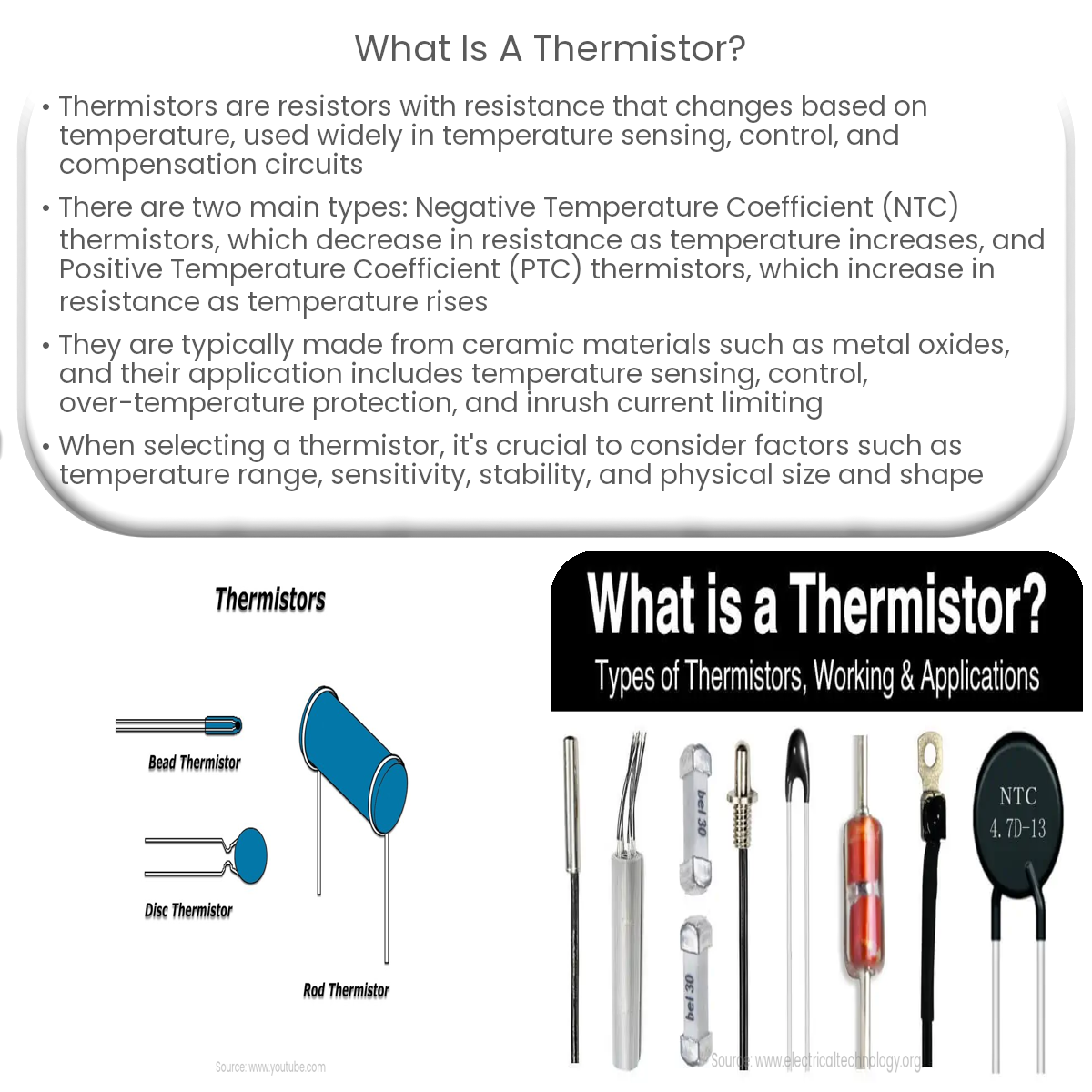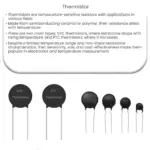A thermistor is a temperature-sensitive resistor whose resistance changes with temperature, used for sensing, control, and over-temperature protection.
Introduction to Thermistors
A thermistor is a specialized type of resistor whose resistance varies significantly with temperature. They are widely used as temperature sensors in various applications, such as home appliances, automotive systems, and industrial equipment. This article will provide an overview of thermistors, their types, and common applications.
Types of Thermistors
Thermistors can be classified into two primary categories based on their temperature-resistance characteristics:
- Negative Temperature Coefficient (NTC) thermistors: NTC thermistors exhibit a decrease in resistance as temperature increases. They are the most common type of thermistor, used for temperature sensing and control in a wide range of applications.
- Positive Temperature Coefficient (PTC) thermistors: PTC thermistors exhibit an increase in resistance as temperature increases. They are often used for over-temperature protection and self-regulating heaters.
How Thermistors Work
Thermistors are typically made from ceramic materials, such as metal oxides, which exhibit a predictable and repeatable change in resistance with temperature. This temperature-resistance relationship can be described using the Steinhart-Hart equation or the simpler B-parameter equation. By measuring the resistance of a thermistor, its temperature can be accurately determined.
Advantages of Thermistors
Thermistors offer several advantages as temperature sensors, including:
- High sensitivity: Thermistors can detect minute temperature changes, making them suitable for precision temperature measurement and control.
- Wide temperature range: Many thermistors can operate over a broad temperature range, from cryogenic temperatures to several hundred degrees Celsius.
- Small size and fast response: Thermistors can be manufactured in small sizes, allowing for quick response times and easy integration into various devices.
- Cost-effective: Thermistors are relatively inexpensive compared to other temperature sensing technologies, such as thermocouples and RTDs.
Common Applications
Thermistors find use in a wide range of applications, including:
- Temperature sensing: Thermistors are used in devices such as thermostats, automotive engine management systems, and refrigerators to measure and control temperature.
- Over-temperature protection: PTC thermistors can act as self-resetting fuses, protecting electronic devices from overheating by limiting current flow when a certain temperature is exceeded.
- Temperature compensation: Thermistors can be used to compensate for temperature-dependent performance changes in electronic circuits, ensuring stable operation.
Conclusion
Thermistors are versatile temperature sensors that find use in a wide range of applications due to their high sensitivity, wide temperature range, and cost-effectiveness. By understanding their types, working principles, and applications, you can effectively utilize thermistors in your projects and designs.





